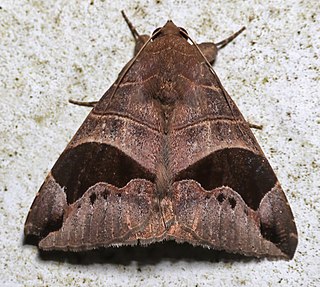
Lymantria dispar, also known as the gypsy moth or the spongy moth, is a species of moth in the family Erebidae native to Europe and Asia. Lymantria dispar is subdivided into several subspecies, with subspecies such as L. d. dispar and L. d. japonica being clearly identifiable without ambiguity. Lymantria dispar has been introduced to several continents and is now additionally found as an invasive species in Africa, North America and South America. The polyphagous larvae live on a variety of deciduous and coniferous trees and can cause severe damage in years of mass reproduction. Due to these features, Lymantria dispar is listed among the world's 100 worst invasive alien species.

The Lymantriinae are a subfamily of moths of the family Erebidae. The taxon was erected by George Hampson in 1893.

Pieter Cramer was a wealthy Dutch merchant in linen and Spanish wool, remembered as an entomologist. Cramer was the director of the Zealand Society, a scientific society located in Flushing, and a member of Concordia et Libertate, based in Amsterdam. This literary and patriotic society, where Cramer gave lectures on minerals, commissioned and/or financed the publishing of his book De uitlandsche Kapellen, on foreign (exotic) butterflies, occurring in three parts of the world Asia, Africa and America.

Lymantria is a genus of tussock moths in the family Erebidae. They are widely distributed throughout Europe, Japan, India, Sri Lanka, Myanmar, Java, and Celebes. The genus was erected by Jacob Hübner in 1819.
Darceta is a genus of moths of the family Noctuidae.

Antheraea jana is a moth of the family Saturniidae first described by Stoll in 1782. It is found in Sundaland, the Andamans and Myanmar.

Bastilla joviana is a moth of the family Noctuidae first described by Stoll in 1782. It is found from the Oriental region to the Moluccas and in New Guinea and Australia. It is also present in South Africa.

Pingasa chlora, the white looper moth or flower-eating caterpillar, is a species of moth of the family Geometridae first described by Caspar Stoll in 1782. It is found in Sundaland, the Philippines, Sulawesi and from the Moluccas to Queensland, Australia.

Pseudodirphia eumedide is a moth of the family Saturniidae first described by Caspar Stoll in 1782. It is found in Suriname, French Guiana, Peru, Venezuela and Panama.

Lymantria dispar dispar, commonly known as the gypsy moth, European gypsy moth, LDD moth, or North American gypsy moth or spongy moth, is a species of moth in the family Erebidae. It has a native range that extends over Europe and parts of Africa, and is an invasive species in North America.
Aethalida pasinuntia is a moth of the family Erebidae. It was described by Stoll in 1782. It is found in the southern Moluccas.
Echeta pandiona is a moth of the family Erebidae. It was described by Caspar Stoll in 1782. It is found in Suriname.

Ernassa justina is a moth of the family Erebidae first described by Caspar Stoll in 1782. It is found in French Guiana and Suriname.
Melese dorothea is a moth of the family Erebidae. It was described by Caspar Stoll in 1782. It is found in French Guiana, Suriname, Brazil, Paraguay, Ecuador, Peru and Panama.

Cucullia splendida is a species of moth of the family Noctuidae first described by Caspar Stoll in 1782. It is found in Russia and parts of Africa, Asia and America.

Apatelodes firmiana is a moth in the family Apatelodidae first described by Caspar Stoll in 1782. It is found from Mexico to Guyana













